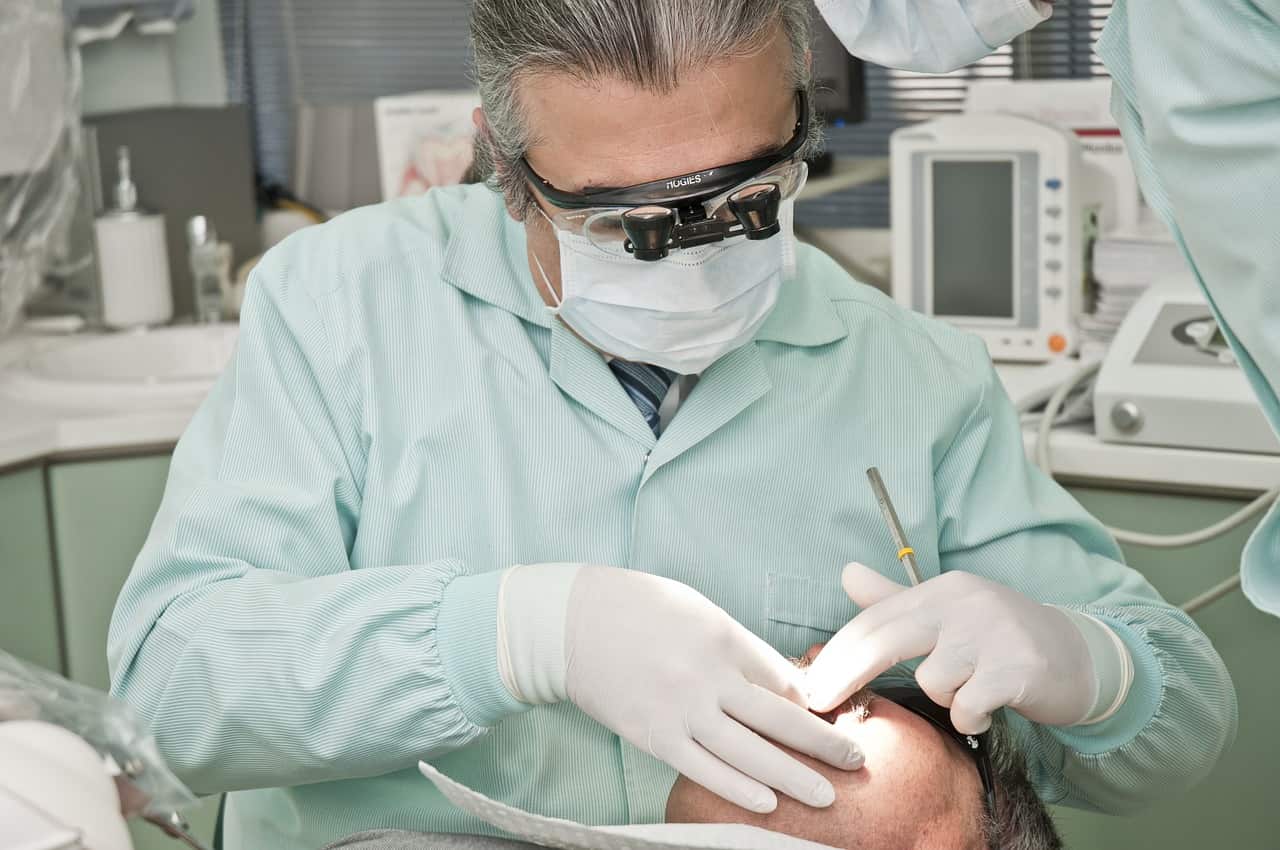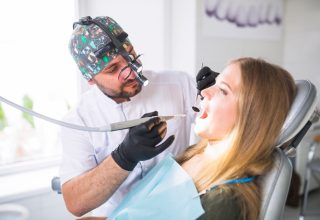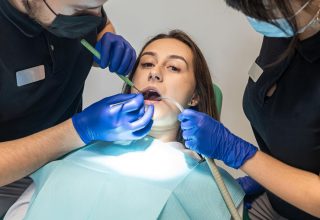Becoming a Pediatric Dentist in Tulsa Step-by-Step
It is probably safe to say that nearly every person will visit the dentist at least once in their lifetime. By that logic, it is also probably safe to assume that you have visited the dentist at some point in your life as well. Perhaps you had a severe gum infection, or maybe some of your teeth began showing signs of decay.
Whatever the reason may be, in order to maintain proper oral hygiene, consulting with a dentist is essential. Most of us had our first experience with the dentist during childhood. In those instances, dentists—regardless of specialty—all carried the same moniker. In adulthood, we realize that the term “dentist” acts as a sort of umbrella, encompassing a number of different specialties. For instance, the dentist you saw when you were a child would likely be referred to as a pediatric dentist today. There are many other types of dentists including Orthodontists, Periodontists, Endodontists, and Oral Surgeons to name a few. Their varying specialties are vast and a simple salary comparison will show that their pay correlates to the difficulty of their respective specialties.
The necessity for dental care and proper oral hygiene appear the moment baby teeth begin appearing. Without this, a vital part of the equation for a strong and healthy growing kid is missing. With that in mind, it becomes essential for parents to schedule regular checkups and appointments with a dentist to ensure their child’s oral health is maintained.
Every new parent will be expected to practice basic oral hygiene with their new baby. This basically just means that the baby’s teeth must be cleaned often. You don’t need a toothbrush to do this. In fact, all you really need is a soft washcloth. As your child gets older, the dentist will recommend when you may start using a toothbrush, as well as which type of toothbrush is ideal for your child’s age.
Most children begin seeing a dentist once they reach one year of age. Doing so ensures that a long-term oral healthcare plan is established. It may take a little research and trial-and-error, but once you find a good dentist that you trust and a relationship is formed, a long-term perspective for your child’s oral health can be forged. Naturally, this plan will vary based on factors specific to your child, but most dentists are well-adapted to change and grow with your child.
Contents
The Job of Pediatric Dentist’s
A pediatric dentist is one who specializes in orthodontics exclusively for children. His job is to handle all tasks, similar to a typical dentist. However, he should be aware of the needs and focus all his attention on the welfare of the child.
To become a pediatric dentist, one should know what types of tasks he/she should be able to handle.
A pediatric dentist must know how to handle children. Kids are often very hesitant and resistant to their first dental visit. They often need some additional support during a time of fear. Using a practice that focuses on what young patients need to get through the tour is crucial. An office that allows parents to sit with their kids during the appointment is the best.
They must be polite, encouraging, tolerant, and loving with the young ones. This is very important if you want to become a successful children’s dentist. It creates a good relationship between you and the child, enhancing a perfect atmosphere for the child to love coming for an oral check-up.
A calm staff with a great deal of experience in dealing with children will be more likely to react dynamically if a child should become scared or throw a turmoil. A child-friendly staff will also create a more calming, welcoming atmosphere that may ease children’s fears before an emotional surge can occur.
Your positive attitude will help you with the education of oral health to children. The best way to do that is to educate not only the patients but also their parents. This spreading of knowledge can widen by arranging visits to schools and teaching the teachers as well.
When a patient comes to the dentist, he/she expects that the dentist will make the right diagnosis. Dentists listen to the symptoms and administer tests to diagnose the problem correctly. There are systematic steps in diagnosing an oral problem
- Acquiring history of overall health
- Examination of the mouth
- Writing the case history
- Administering tests
- Proper diagnosis after the test
After an adequate diagnosis treatment is given. This should be with care because the teeth and gums of children are sensitive. Consider the procedures that will not lead to the child being uncomfortable. A dentist can choose from the following methods;
- Using fluoride gel.
- Filling in the decayed tooth.
- Removal of the damaged part and cover it with the crown.
- It fits the space with dentures, crowns, or implants.
- Treating the root canal.
Sometimes an expert dentist also starts training trainees to spread the knowledge he/she has. This helps other pediatric dentists learn with new and improved techniques. Through this transmission of experience, you will have the proper care of kid’s teeth spreading all over and thus having kids whose oral health is due.
Lastly, a professional pediatric orthodontist should be in touch with the latest technology and findings in the field. Therefore, he needs to enroll in orthodontic continuing education to keep up with the latest advancements. This will enable them to know the latest techniques in the field and the proper administration of the medications.
A kid’s first visit to the dentist can be terrifying and unnerving for everyone involved. However, it can be a great experience as long as the right practice is chosen. To find the best training, get referrals from friends and relatives for recommendations on the office they have used. It may be possible to visit different methods to find out how they operate and determine which is best for the needs of the family.
How to Become a Pediatric Dentist

If you are planning to become an orthodontist or wish that, your child should have a career in this field, and you need to know all the necessary steps and requirements of it. This will help you in managing your finance, time, and you can set your mind on the goal you want to achieve.
One of the benefits of this career is that you can choose to work anywhere in the country and often work with pediatricians to help care for the health of young children. You are most likely the best one to care for their tooth and gum needs because you have been trained to use smaller equipment to be used in the smaller mouths of children.
Here are the steps you need to pursue to reach your destination.
1. Basic Education
The most basic education is very vital because good grades in high school will pave your path. Concentrate more on science subjects like; biology, physics or chemistry. Your good grades will get you into a respectable college and then a university, where you can study further in science subjects.
2. Preparing for Admission Tests
You need to pass an admission test that all dental schools conduct; without it, your admission is impossible. This test is the Dental Admission Test (DAT). You need to score at least 50% to pass and study in any dental school. Be prepared to do this test with that passion for pursuing the course.
3. Join a Dental School

When you have acquired admission to a dental school, there you must study either Doctor of Dental Surgery or Doctor of Dental Medicine. It will take you four years to graduate with the degree. Besides the regular course, you can also choose other specialties to focus on, including:
- Endodontic
- Dental Public Health
- Oral and Maxillofacial Pathology
- Oral and Maxillofacial Surgery
- Prosthodontics
- Orthodontics and Dentofacial Orthopedics
- Periodontics
- Oral and Maxillofacial Radiology
- Pediatric Dentistry
4. Residency in Pediatric Dentistry
After graduating, you must complete a two-year Pediatric dental residency. This residency helps to specialize in a specific field of pediatric dentistry. In addition to the primary children’s dentistry, you can have insight into child development, child-related pharmacology, child psychology, and other relevant areas. Many institutions and clinics offer residency to freely graduated students.
5. Acquire Licenses of Different Boards
On finishing the education and residency, you need to pass an examination to have your license to start your general practice. This exam is the National Board Dental Examination. Further, you need to have pediatric permission to kick off pediatric dental services. The American Board of Pediatric Dentistry (ABPB) offers additional certificates.
Conclusion
If you have a desire to work with children and care about their tooth and gum health, then becoming a pediatric dentist may be just the career you are looking for. Helping a child take better care of his or her teeth now will lead to a healthier life later on, as well as create more comfortable dental appointments in his future. Proper prevention can lead to healthier teeth and gums after the adult teeth replace the baby ones.
Read Also:
- 15 Useful Home Remedies for Toothache
- Dental Cavities – Signs to Know That Your Teeth Have Cavities
-
5 Most Popular Plastic Surgery Procedures Performed around the World



